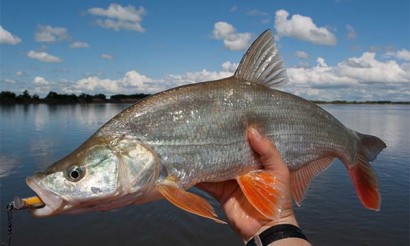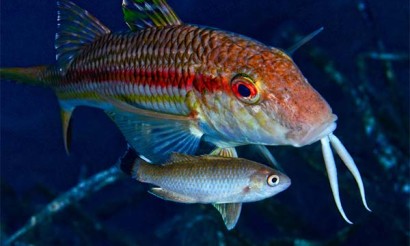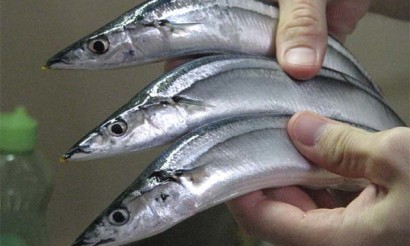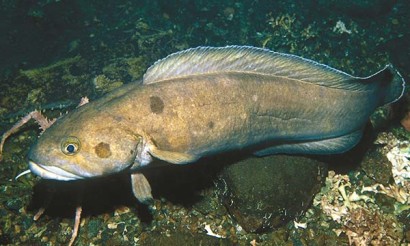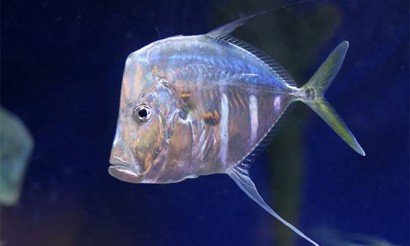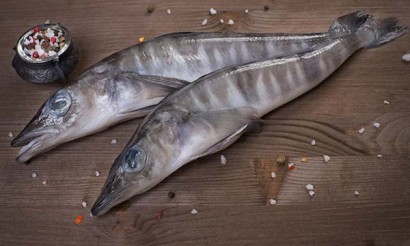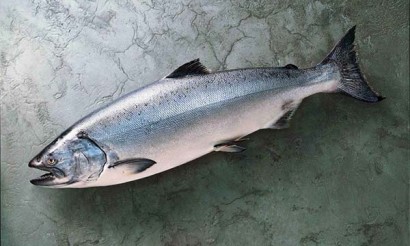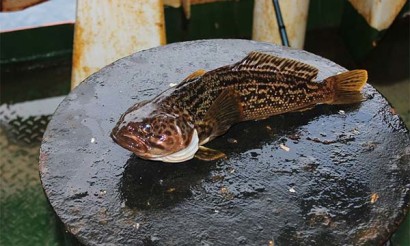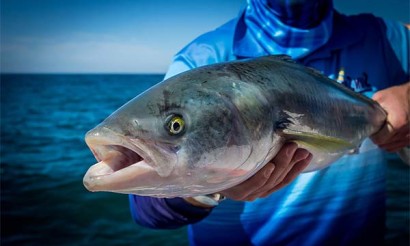Chebak fish: photo, description, useful properties and recipes
Small freshwater fish despite its mediocre gastronomic characteristics is useful for children, the elderly, pregnant and nursing women. Due to the content of useful substances, a small amount of fat, doctors recommend chebak meat to patients with diabetes, obesity, suffering from heart failure, allergic reactions.
- Chebak: what kind of fish it is, what it looks like and where it lives
- What does it look like?
- Where does it live?
- What it eats
- Breeding process
- Variety
- Status of the species and commercial fishery
- Differences of the silver carp from other fish
- From roach
- From brook trout
- From rudd
- From spruce
- Common bleak
- How to catch burbot: when, where and on what?
- When to catch
- Where to catch
- What to catch
- Composition and calories
- What is the usefulness of Siberian roach?
- Harm and contraindications
- Rules of storage
- Where to buy and how much costs
- How to cook fish chubak: Recipes
- In the oven
- In a multicooker
- In the frying pan
- How to Dry Fish
- Recipe for Siberian roach soup
- How to cook fish cutlets
- Q&A
- Is a silver carp fat or not?
- Are there many bones in the fish?
Chebak: what kind of fish is it, how does it look and where does it live?
Chebak, Siberian roach, Amur ide (lat. Rutilus rutilus lacustris) is the only subspecies of common roach, family Carp, caught on an industrial scale. The average size of the fish is 30-35 cm with a weight of 300-400 g. The maximum weight is 0.7 kg.
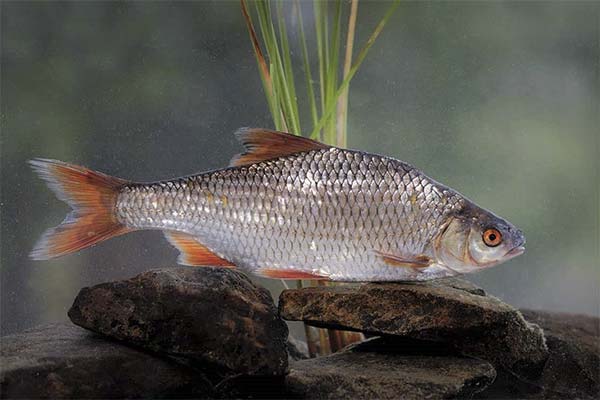
What it looks like
A tall, flattened body with large, easily detachable scales and a short head, the chub is colored silver. Shades become more intense from the pale abdomen to the dark gray upper body with a bluish or greenish cast.
The dorsal and caudal fins are gray with a green and red tint, the pectoral fins are light yellow, and the pelvic and anal fins are red. A special feature of the chebak by which it is distinguished from other species is a yellow iris eyes with a red spot in the upper part.
Where does it live
Chebak is common in Yakutsk, Siberian, Ural, and Transbaikal freshwater reservoirs in the Far East. The fish inhabits both small ponds, channels and large lakes, rivers, reservoirs, where it leads in numbers.
The Siberian roach prefers bodies of water with moderately cold water, rocky bottom, overgrown with vegetation.
What it eats
The diet of the omnivorous silverfish includes food of animal and plant origin:
- insects, their larvae;
- worms;
- filamentous algae;
- small crustaceans;
- higher plants.
The favorite dainties of roach are roach and fish roe.
Reproductive process
The Siberian roach becomes sexually mature in its 3rd-4th year of life. Spawning begins when the water heats up to 8-10 ° C. This usually occurs in the latter part of April. This usually occurs in late April. Mass single spawning lasts until the end of the first decade of May.
The Siberian roach is a typical phytophile that lays eggs on plants in low-water areas of water bodies. The fecundity of females is from three to one hundred thousand eggs, 1.5 mm in diameter. Hatching occurs on days 10-14. They quickly switch to a diet of small invertebrates, and by fall grow to five centimeters.
Variety
Ichthyologists allocate 13 subspecies of common roach. The most significant species, except for the chebak:
- Azov-Black Sea taran, wintering, spawning in river mouths.
- Aral roach, widespread throughout the Syr Darya, Amu Darya, and Zarafshan rivers.
- The Caspian roach, which lives exclusively in the Caspian Sea.
Most subspecies raise doubts among scientists about the correctness of the systematization, as only the roach has clear differences.
The Siberian roach is the most valuable of the resident freshwater subspecies. The semi-anadromous taran and wobbler are more actively harvested.
Status of the species and commercial fishery
Chebak grows and develops rapidly, which is reflected in the high population numbers and the absence of restrictions on catching. Despite its low nutritional value, the fish is caught on an industrial scale as bycatch.
In addition, the catching of Siberian roach is a necessary measure to preserve the food base for other more valuable fish species.
Differences of the chebak from other fish
Externally similar fish species are distinguished by size, body structure, habitat, color shades, and meat taste.
From roach.
Size roach is larger (up to 3 kg with a body length of up to 0.5 m), but grows more slowly and becomes sexually mature later. The chebak's body is more flattened, the head is shorter, and the lateral line is straight rather than curved.
It is not difficult to distinguish fish by eye color. If the Siberian roach has a yellow iris with a red spot on top, the common roach's eyes are completely red.
From the magpie.
The fish are difficult to distinguish. The magpie is larger, the body color and fins are duller.
From redfin.
If the main color of the body of the chebak is silver, and the fins are light red, yellow or gray, the redfin has golden scales and bright red fins.
Differences in the structure and size of the head are noticeable. The redfin has a larger head with its mouth raised upward, while the Siberian roach has a smaller head relative to the body and a straight mouth.
From the spruce
The spruce roach, with its shorter, lower body, unlike the chebak, does not live in standing water. If the Siberian roach has a dark back with a greenish or blue tint, and the sides are silvery, the spruce fish has a steel-colored upper body and gray-blue sides.
You can tell the fish by the color of the pectoral and pelvic fins. Chubak they are brighter.
From the bleak.
The bleak has a whitish iris of the eyes, lives exclusively in water bodies of the European part of Russia. The fish is twice as small as the Siberian roach. Its average size is 15-20 cm with a weight of 60-80 g.
In cooking, the bleak is more often used for the preparation of sprats, while a variety of dishes are prepared from the chebak.
How to fish for chebak: when, where and on what?
The Siberian roach is caught by float rod, bottom fishing rod or light spinning. Amateur fishermen are interested not so much in the meat of the fish with mediocre gastronomic qualities, as in the process itself and a consistently good catch.
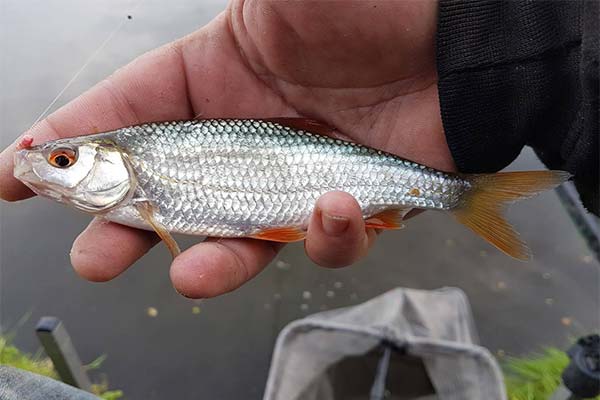
When to catch
Fish are caught all year round. Particularly frequent bites in the spring, when the bobber fattens up before spawning. In summer, the fish is active only in the morning dawn and evening.
In the fall, before going to winter, Siberian roach trying to gain more weight, begins to feed intensively. If after the ice break fish bites on vegetable and protein baits, closer to winter prefers animal bait.
In spring and fall the silver carp is caught all day long. At night they catch particularly large individuals, going out to hunt. The roach is poorly caught by sudden changes in weather conditions. The only exception - a short period of time before a thunderstorm, when its binge is the most active.
Where to catch
Finding a fishing spot is not difficult, as the number of Chubak in water bodies exceeds the number of other freshwater fish species.
The roach can be found in both standing and flowing waters. It prefers shallow algae-covered waters with a weak current, ripples, shoulders, areas with submerged trees.
Chebak responds well to bait. It's enough to scatter porridge near the shore, as in the fished place quickly gathers a whole flock.
What to catch
Catch Siberian roach more often on a float rod with a thin line (0,2 mm), a small weight and a sensitive float.
From the bait choose:
- moths;
- brook trout
- maggots;
- lamprey larvae;
- grasshopper
- dragonfly;
- bread;
- corn;
- dough;
- grits.
When fishing for spinning use light tackle with a rod not longer than 2.4 m, light spinners, wobblers size 0,1 or imitations of insects.
If fishing with a bottom line, it is suitable line 0,12-0,14 mm, from the bait - worms, bread crumbs, mormyshka.
Composition and calories
One hundred grams of edible part of a silverfish contains niacin, polyunsaturated fatty acids. The mineral composition is represented by iodine, cobalt, manganese, sulfur, zinc, fluorine.
FWS 100 g of food - 19, 3.8, 0 g, respectively. The caloric value is 110 kcal.
How is the Siberian roach useful?
Chubak (100 g) covers 25% of the daily requirement for easily digestible protein, contains 33% of the daily requirement of iodine.
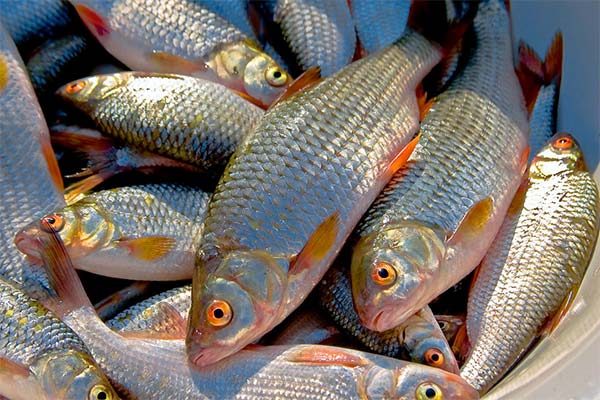
The benefits of using the fish on a regular basis:
- Supports the health of the thyroid gland, visual acuity.
- Establishes the metabolism.
- Promotes mental development of children, prevents senile dementia.
- Normalizes the level of sugar in the blood.
- Strengthens the heart muscle, the walls of blood vessels.
- Prevents arterial hypotension.
Siberian roach improves hair, nail plates, fights age-related skin changes, acne.
Harms and contraindications
The only absolute contraindication to the consumption of chebak is an intolerance of the product.
With insufficient heat treatment, Siberian roach, as well as any other river fish can infect with helminths. Smoked chubak is dangerous because it contains carcinogens, while dried - high salt content that causes swelling, spikes in blood pressure, kidney dysfunction.
Rules of storage
Chilled chubber does not lose its consumer properties on the coldest shelf of the refrigerator for 48 hours. If you put ice on all sides of the roach, grease it with vegetable oil or splash it with lemon juice, the preservation time increases to three days.
In the freezer fish retains its nutritional value and organoleptic properties for six months. Before freezing it is gutted, washed and dried.
Dry fish is kept in a cellar, basement, attic, wrapped in paper and hung on hooks. Optimal storage conditions - temperature 0-12 ° C, relative humidity 75-80%, away from direct sunlight.
Where to buy and how much does it cost
Siberian roach is purchased in fisheries, from individuals and online sites. Fresh fish is sold at a price of 140-190 p. per 1 kg. Dried burbot are usually sold by the piece for 20-50 rubles.
How to cook fish burbot: Recipes
Fish with a bright smell, tender fillet is used to prepare kulebyaki, rastegai, cutlets, first courses. The roach is stewed, pan-fried and charcoal, baked in the oven, salted, dried and pickled.
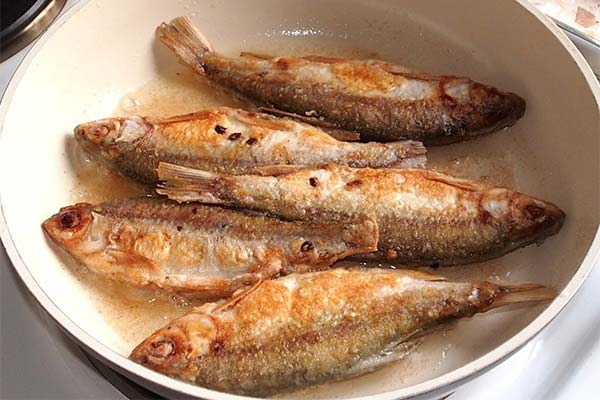
To remove the smell of slime, the meat is soaked in a strong salt solution, sprinkled with lemon juice.
In the oven
Baking time depends on the size of the fish. Large catfish are cooked for 40 minutes, small - in half the time.
Product set:
- 300 g Siberian roach;
- 1 tbsp. lemon juice;
- 2 sprigs of rosemary;
- salt.
How to prepare:
- Clean, gut and rinse the catfish.
- Cover a baking tray with foil. Spread out the fish and rub salt on all sides.
- Drizzle lemon juice over the fish. Place sprigs of rosemary on each side.
- Seal roach tightly in foil.
- Bake in a preheated oven to 180 ° C for a quarter of an hour. Unfold the foil, continue cooking for another 7 minutes until the fish is browned.
Serve with mashed rice, mashed potatoes, green peas or vegetable salad with oil dressing.
In the multicooker
To cook roach under cheese in the multicooker, prepare the products:
- 2 fish;
- 3 tomatoes;
- 1 onion;
- 100 grams of cheese, sour cream;
- 1 tbsp. vegetable oil, lemon juice;
- 0.5 tsp. oregano;
- 2 cloves of garlic;
- 0.5 cans of black olives;
- pepper, salt.
Cooking steps:
- Remove scales from the fish, gut it, cut off the heads, trim the fins, and rinse. Make deep cuts along the back at 5 mm intervals.
- Rub the carcasses with a mixture of salt and half the oregano, sprinkle with lemon juice.
- After 20 minutes grease a bowl of a multicooker with oil.
- In the sour cream, add the rest of the oregano, pressed garlic.
- Grate the cheese. Cut tomatoes into circles, peeled onions and olives in rings.
- Put marinated roach, onions, tomatoes and olives in a bowl one after the other. Pour the sour cream mixture and sprinkle with cheese.
- Close the lid of the multicooker. Cook for 20 minutes in baking mode.
Serve rice, buckwheat, stewed carrots, zucchini, broccoli, sweet peppers as a side dish.
In a frying pan.
The most delicious fried fish is freshly caught.
Clean the catfish of scales, sweep out the belly, carefully extract the insides, trying not to damage the gallbladder. Rinse the fish carcasses, dry them with paper towels.
From the tail to the head along the back at a distance of 6 mm make deep incisions up to the backbone.
Heat a frying pan with vegetable oil. Baste the patties in flour and fry until they are appetizingly crispy. If done correctly, the small bones will soften and will not be felt when eating.
How to Sear a Fish
Smaller catfish are dried without gutting; individuals weighing over 500 g have their insides removed.

To properly salt 1 kg of fish before drying requires 150 grams of salt.
Pour sodium chloride on the bottom of an enamel or stainless steel pan. With the same seasoning rub each carcass on the outside, inside. Stack in a container, fill the voids with salt. Press the cheab with a flat plate, set a burden. Put the pot in a cool place for 3 days. The carcasses will be salted evenly as the meat releases its juice.
At the end of the period, wash the fish, hang it to dry on a balcony, a loggia or in a ventilated room, placing a tray under the bottom to drain the fat.
Drying time 5-14 days. Depends on the size of fish, drying conditions.
Recipe of Siberian roach soup
Chubak soup is a delicious first dish with a pleasant flavor, which is cooked in an open pot without a rapid boil.
Ingredients:
- 3 pcs. fish;
- 1 piece each of onions, carrots;
- 4 potato tubers;
- dill greens, parsley;
- 2 bay leaves;
- salt, pepper, pepper pepper.
How to boil:
- Clean the fish, remove the insides, gills, eyes, rinse.
- Put a pot with water on the stove. Put a clean, unpeeled onion into the pot.
- Peel, cut potatoes into bars, cut carrots into circles. Add the vegetables to the onions.
- When it boils, add bay leaf, salt, 4 peppercorns. Cook for 7 minutes.
- Add the fish. Continue to cook on low heat for a quarter of an hour.
- Three minutes before end of cooking add chopped greens.
Serve fish soup with sour cream and butter.
How to cook fish cutlets
It is not difficult to make fish cutlets with roach. To make them juicy, add lard.
Ingredients:
- 1 kg of Siberian roach;
- 1 egg;
- 300 grams of bacon;
- two slices of loaf;
- two onions;
- vegetable oil for frying;
- pepper, salt;
- breadcrumbs for breading.
Recipe:
- Clean the fish, gut it. Cut off the head, tail, cut off the fins, wash. Remove the husks from the onion, chop coarsely. Crush the fat, soak white bread in milk or water.
- Pass through a mincer with the finest grater the prepared ingredients. Beat egg, salt and pepper. Mix until homogeneous.
- Form cutlets and roll in breadcrumbs. Fry in a heated frying pan with oil on each side until tender.
Q&A
Consumers often ask questions about the gastronomic qualities of Siberian roach.
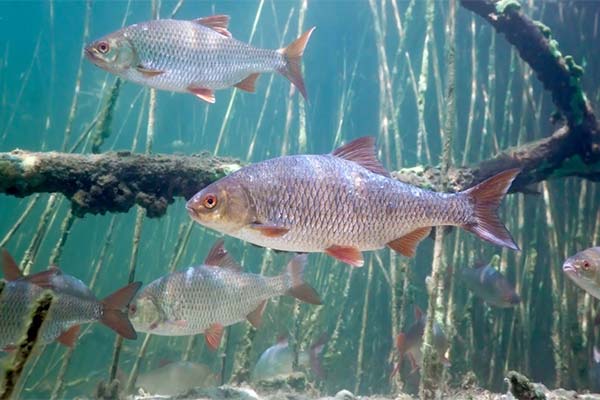
Is the chubak fatty or not?
The fat content in 100 grams of edible fish is 3.8 g. Chebak with a fat content of less than 4% is classified as a low-fat fish along with saffron cod, pollack, pike.
Are there many bones in the fish?
The Siberian roach, especially its smaller representatives, has many small bones. Deep incisions along the back before frying, braising or baking solve this problem. In dried fish, the bones are almost invisible.
If you know the subtleties of cooking, dishes with low-calorie chub can diversify the menu without harming the figure.
«Important: All information on this site is provided solely for introductory purposes. Before applying any recommendations, consult with a specialized specialist. Neither the editors nor the authors shall be held liable for any possible harm caused by materials."

